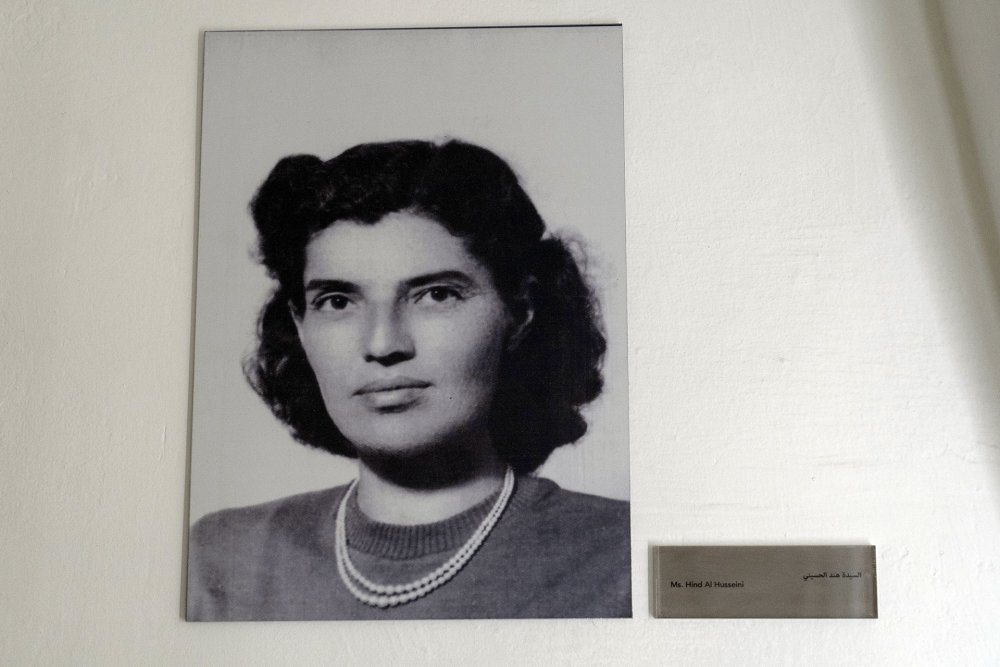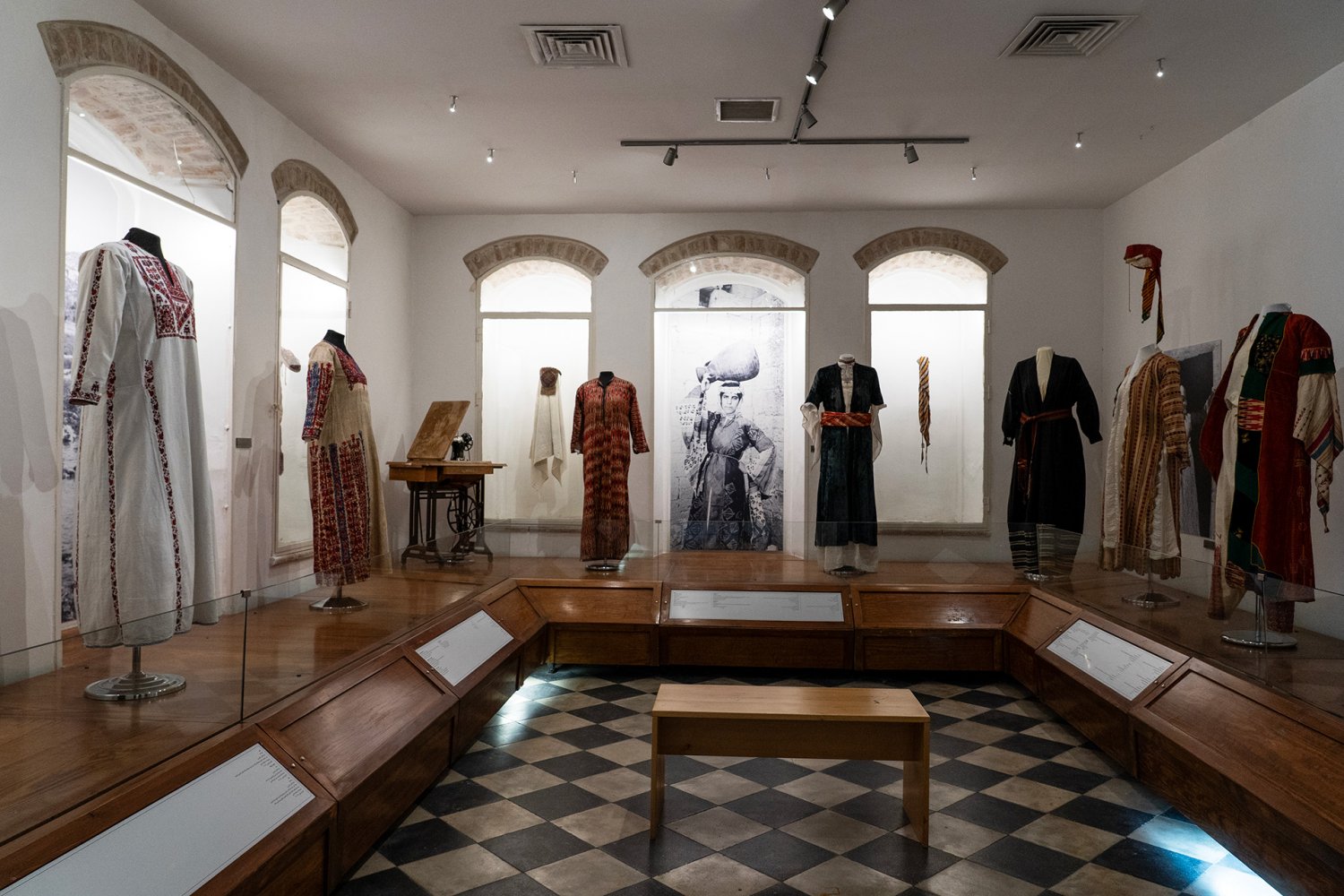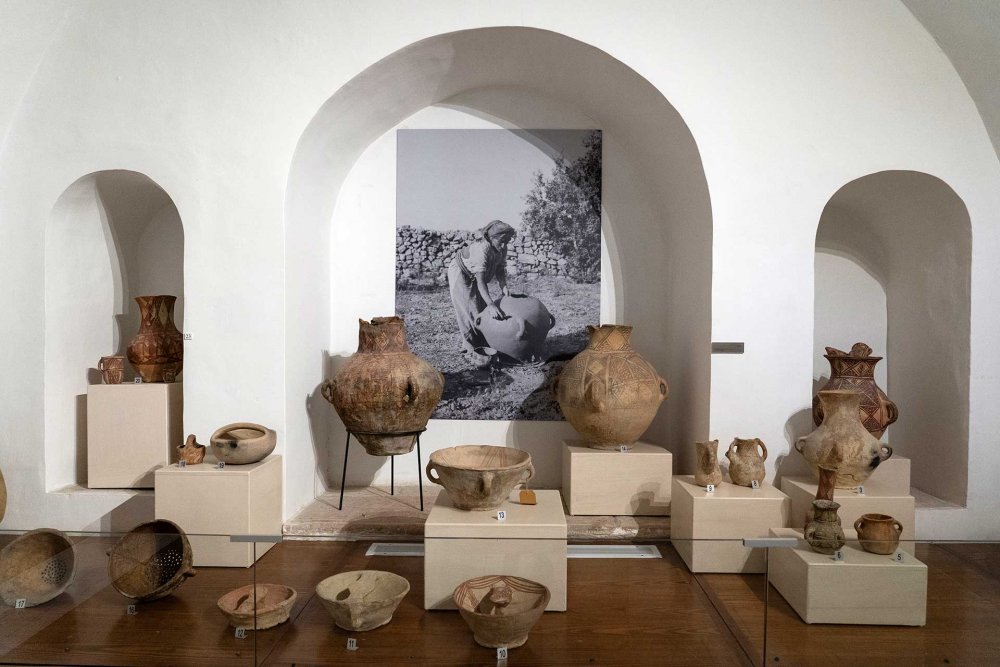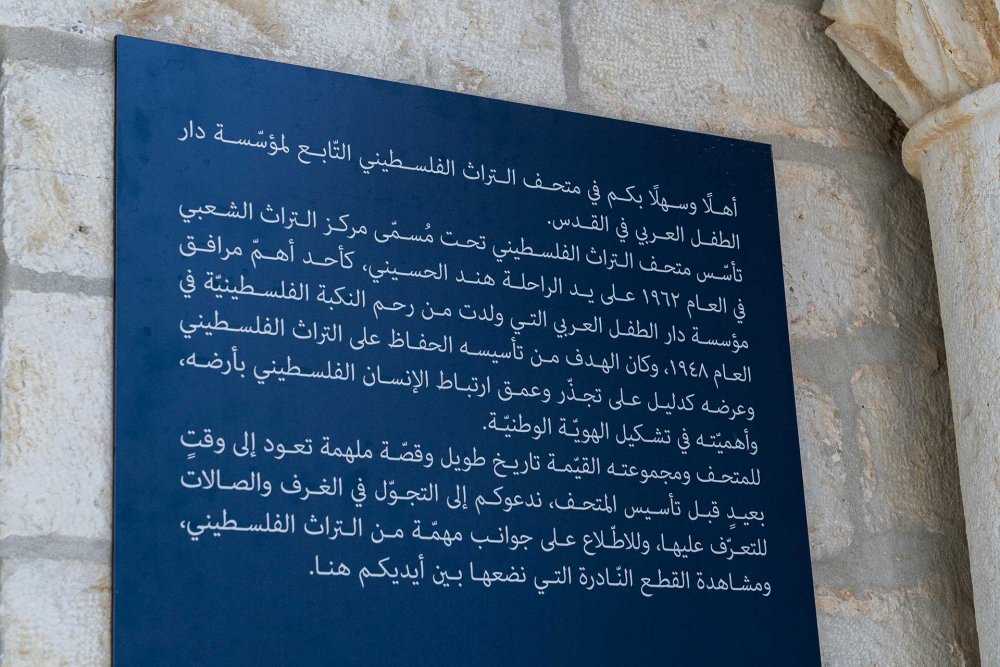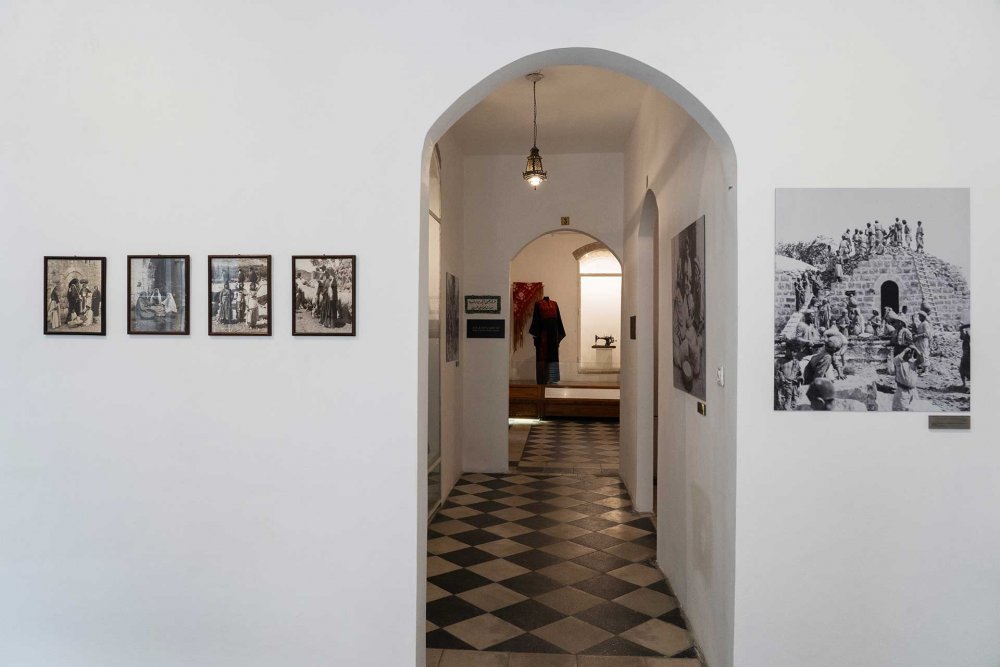The Palestinian Heritage Museum in Jerusalem has long been a symbol of Palestinian identity and history in defiance of Israeli attempts to erase the land’s Palestinian presence. Today, the museum is actively trying to reopen after temporarily shutting its doors for six months due to financial constraints.1

Credit:
Mays Shkerat for Jerusalem Story
A Symbol of Palestinian Identity, Palestinian Heritage Museum Faces Difficulties Reopening
The museum was established by the late Hind al-Husseini in 1962 as the “Folkloric Heritage Center” as part of the Dar Al-Tifel Al-Arabi Institution. This institution originated in 1948, when Hind converted her home into a shelter and orphanage for 55 young children whose parents had been killed during the Deir Yassin massacre in April of that year. Two Zionist militias had attacked the Jerusalem district village (even though it had a nonaggression pact with a neighboring Jewish settlement) and killed somewhere from 107 to 250 Palestinian villagers.2 Hind developed the orphanage into a school and later an institution. Today, the Hind al-Husseini Foundation (Dar Al-Tifel Al-Arabi) runs a private school, Dar Al-Tifel Al-Arabi School, a nursery, and kindergarten, the Palestinian Heritage Museum, and the Dar Isaaf Al-Nashashibi for Culture, Arts and Literature.3
“When you review all the achievements of the Hind al-Husseini Foundation, you see how a woman from Jerusalem was able to reach to such a high position,” Rana Qutteineh, managing director of Dar Al-Tifel Al-Arabi, told Jerusalem Story.4 “If we look at Hind, she did all these things in the days of 1948, when society was not giving women their role . . . she was [still] able to achieve all this. When you visit the museum, you’ll also visit Hind Husseini’s room and see how she used to work on a typewriter.”
The Palestinian Heritage Museum houses heritage items that Hind first began collecting from Palestinian villages depopulated during the Nakba in 1947–48. The museum also features a rare collection of heritage tools, Palestinian traditional dresses, silver jewelry, metal, copper, pottery, straw utensils, and furniture. Additionally, the museum has a collection and documentation section, a conservation laboratory, and a research section.
The museum’s goal has always been to preserve Palestinian heritage and display it to the public as proof of the Palestinian people’s strong roots in their land.5
“The importance of the Palestinian museum is to display Palestinian heritage and to preserve it. In the museum, you’ll find a lot of Palestinian collectibles from the 1920s like ceramic and pottery tools, silver and copper, and a lot of heritage pieces like thobes. And Palestinian jewelry that shows Palestinian heritage and its development. It shows the depths of our rootedness in our Palestinian land,” Rana told Jerusalem Story.
“For me, the museum has a lot of features, especially when you walk through the rooms that feature Palestinian thobes from different Palestinian villages. [You see] what they used to wear, even what tools they used to use—all this is embodied and available in the museum, all original pieces. There are over 4,000 heritage pieces displayed in the museum; the pieces truly tell a story of the Palestinian people,” Rana said. “You get to see how our ancestors used to live, what experiences they faced—it’s nice for us to talk about these things again.”
“The museum has quite a large collection related to Palestinian heritage dating back 500 years,” Dr. Mahmoud Hawari, professor of archaeology at Bethlehem University, told Jerusalem Story.6
“The museum actually tells the story of the Palestinian political and social existence in Jerusalem for hundreds of years,” Mahmoud said. “And that in itself refutes the Zionist propaganda narrative that Palestinians only recently came to Palestine.”
The museum, however, has had a tumultuous history. Its name changed over the years, and its collections were housed by different institutions. With the beginning of the First Intifada, it was forced to shut down for several years. It reopened in 2012 with a new name: Palestinian Heritage Museum/Dar Al-Tifel Al-Arabi Association.7
The museum then closed again for multiple reasons, such as maintenance and restoration issues, financial obstacles, and “as a result of pressures from Israeli authorities,” Mahmoud said.
He explained that the Jerusalem Municipality has imposed high city taxes on the museum, and “they are not exempted from taxes that other Israeli institutions and museums enjoy, so they are not treated as a public venue.”
“Today, the main challenge that Dar Al-Tifel Al-Arabi faces is the ability to stay in Jerusalem and offer its services despite all the challenges that we face,” Rana shared. “The Dar Al-Tifl institute recently suffered financial strains which forced us to send some employees of the museum and Dar Isaaf into unpaid leave for six months. The closure of such a place is a huge loss for Palestinian identity, heritage, and culture.”
“We hope to reopen the museum and come back stronger with different funding in order to maintain this department that is so important to the city of Jerusalem,” Rana added. “What is required of anyone who cares about the Palestinian Heritage Museum is to be part of funding and supporting it.”
“It’s a beautiful house that possesses a history of the Palestinian Jerusalemites,” Maryvelma Smith O’Neil, director of the Alliance to Restore Cultural Heritage in Jerusalem, said of the museum. “And maybe that frightens the Israelis, particularly since it records the memories of [the] Deir Yassin [massacre]."8
Notes
Mayar Junedy, WhatsApp message to the author, August 25, 2024.
“The Deir Yassin Massacre: Why It Still Matters 75 Years Later,” Al Jazeera, April 9, 2023.
“The Palestinian Heritage Museum,” Hind Husseini Foundation (Dar Tifel al-Arabi-Jerusalem), accessed November 1, 2024.
Rana Qutteineh, interview by the Jerusalem Story Team, October 18, 2024. All subsequent quotes from Qutteineh are from this interview.
“The Palestinian Heritage Museum.”
Mahmoud Hawari, interview by the author, August 31, 2024. All subsequent quotes from Hawari are from this interview.
“The Palestinian Heritage Museum.”
Maryvelma Smith O’Neil, interview by the author, August 23, 2024.

